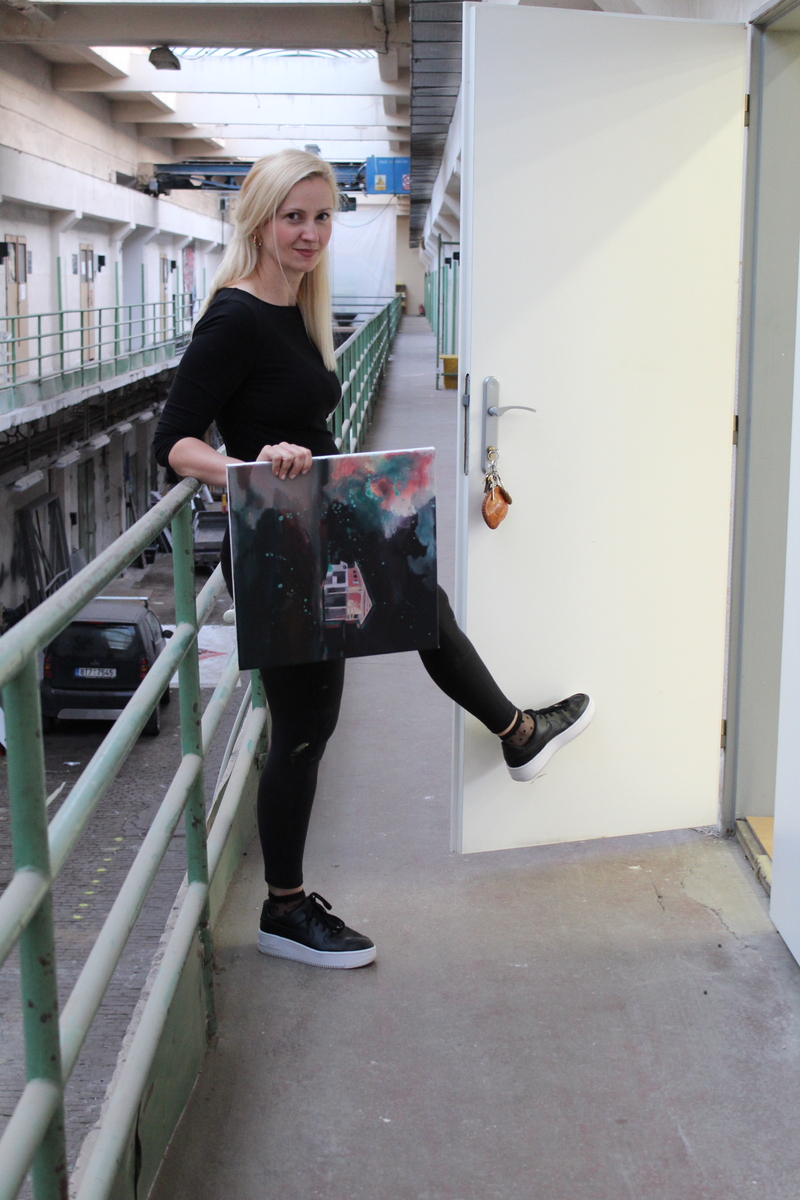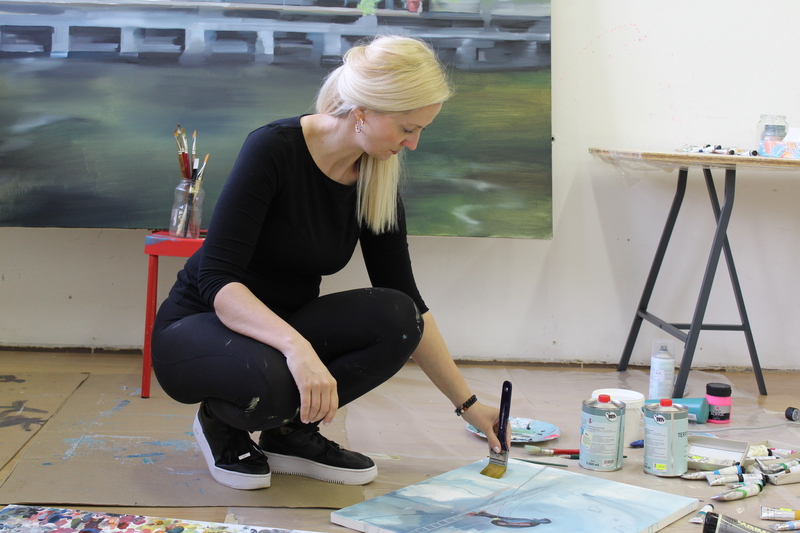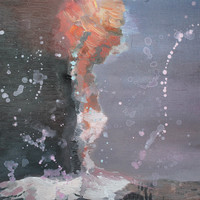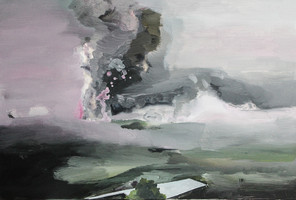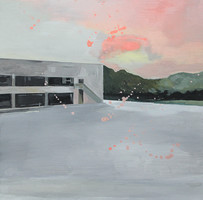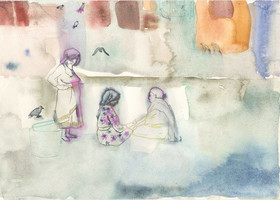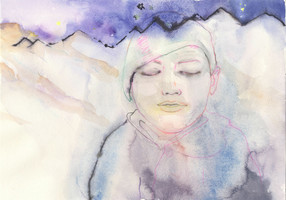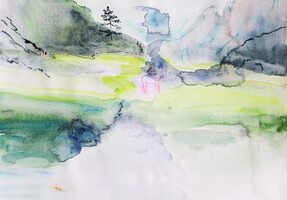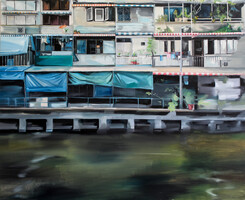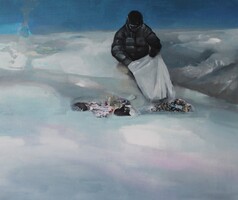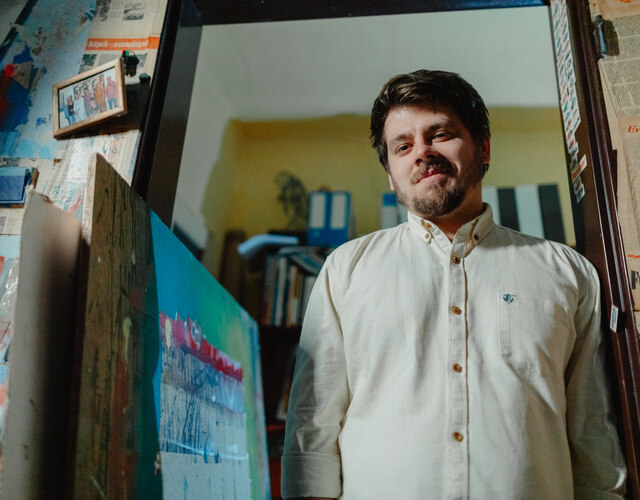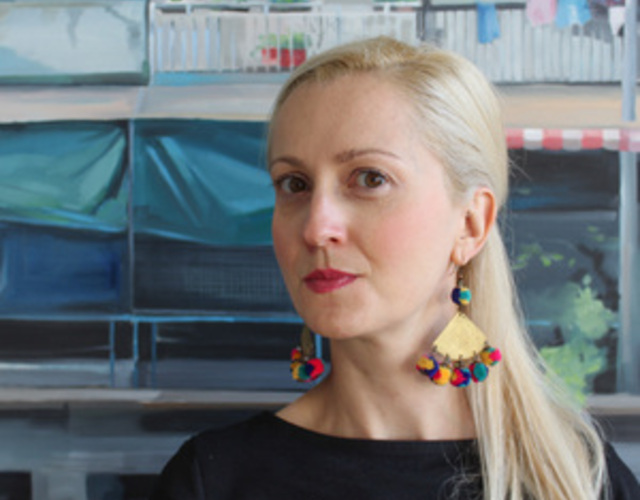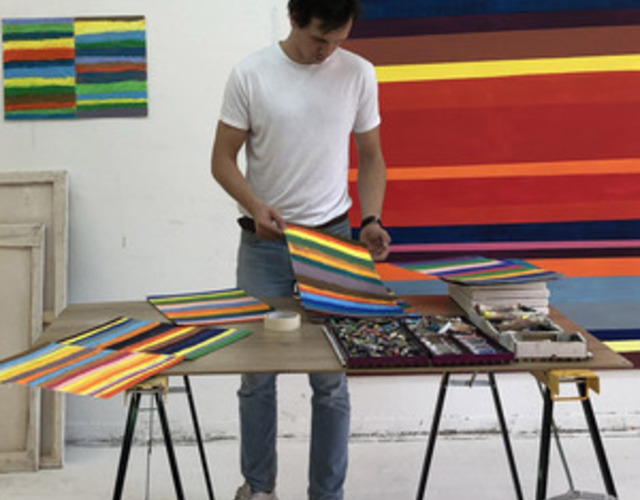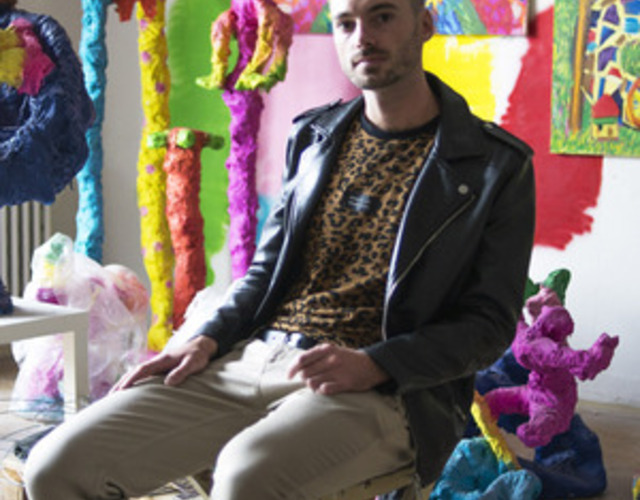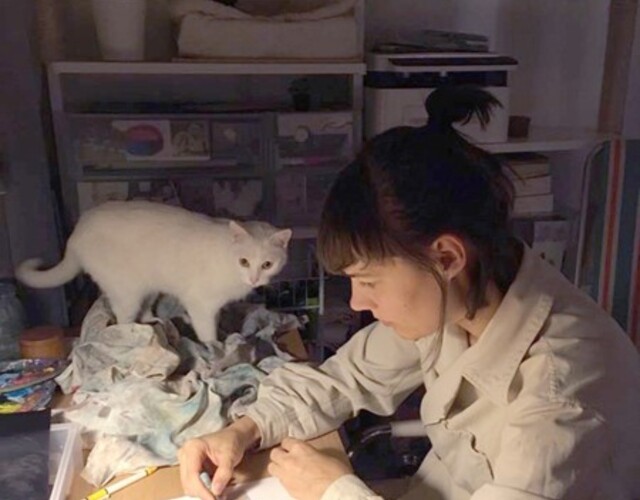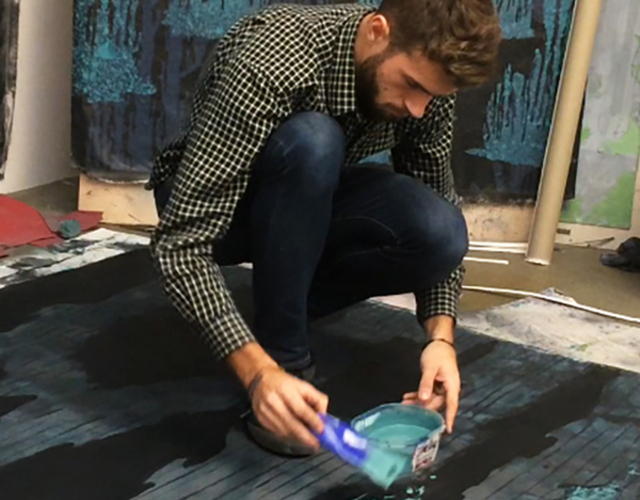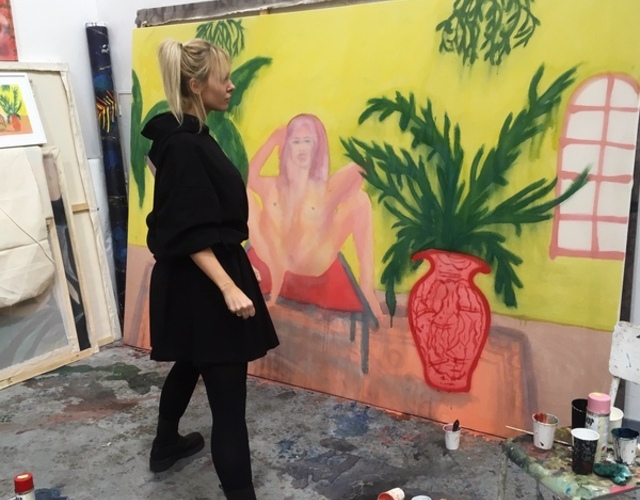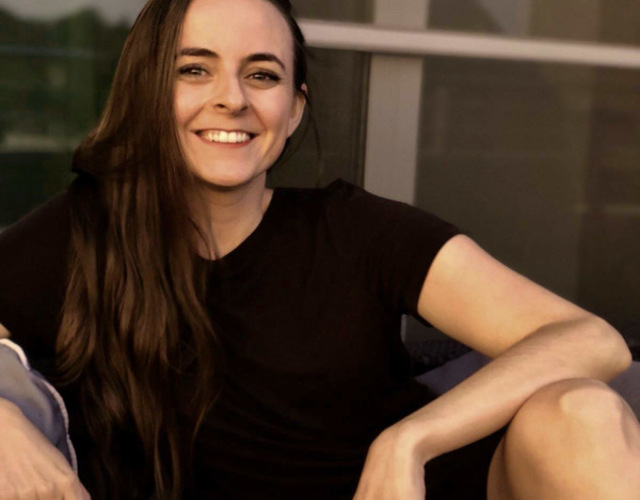Julie Machallova
Published 2022-09-12
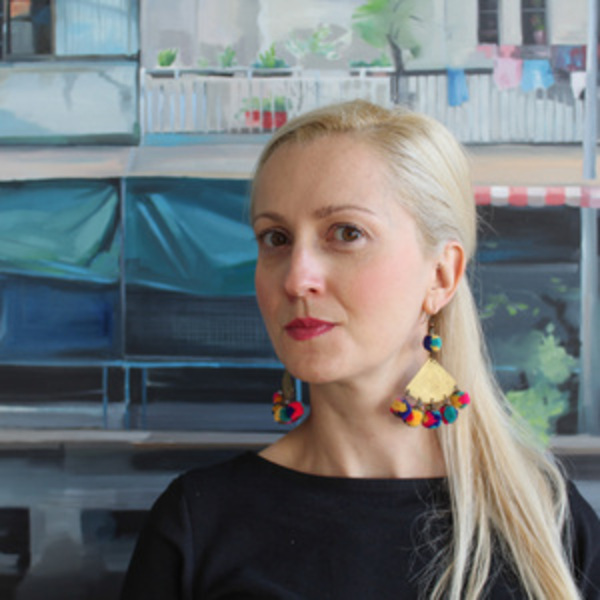
Aqua, acrylic, aquarelle. On Julie Machallová’s paintings
The pun in the title of this essay is not as cheesy as it may seem. It’s not just that the paints Julie uses most frequently are water soluble. Water, in all states of matter and all forms, is an important component in her works, although it is not necessarily the main theme. The presence of water in Julie’s expansive paintings is a factor that reliably elicits or strengthens the impression of expansiveness: water washes the shore; it lies in masses of snow and ice; in the form of vapor, it gathers in heavy clouds or in contrast it rises upward lightly, splashing in droplets in all directions.
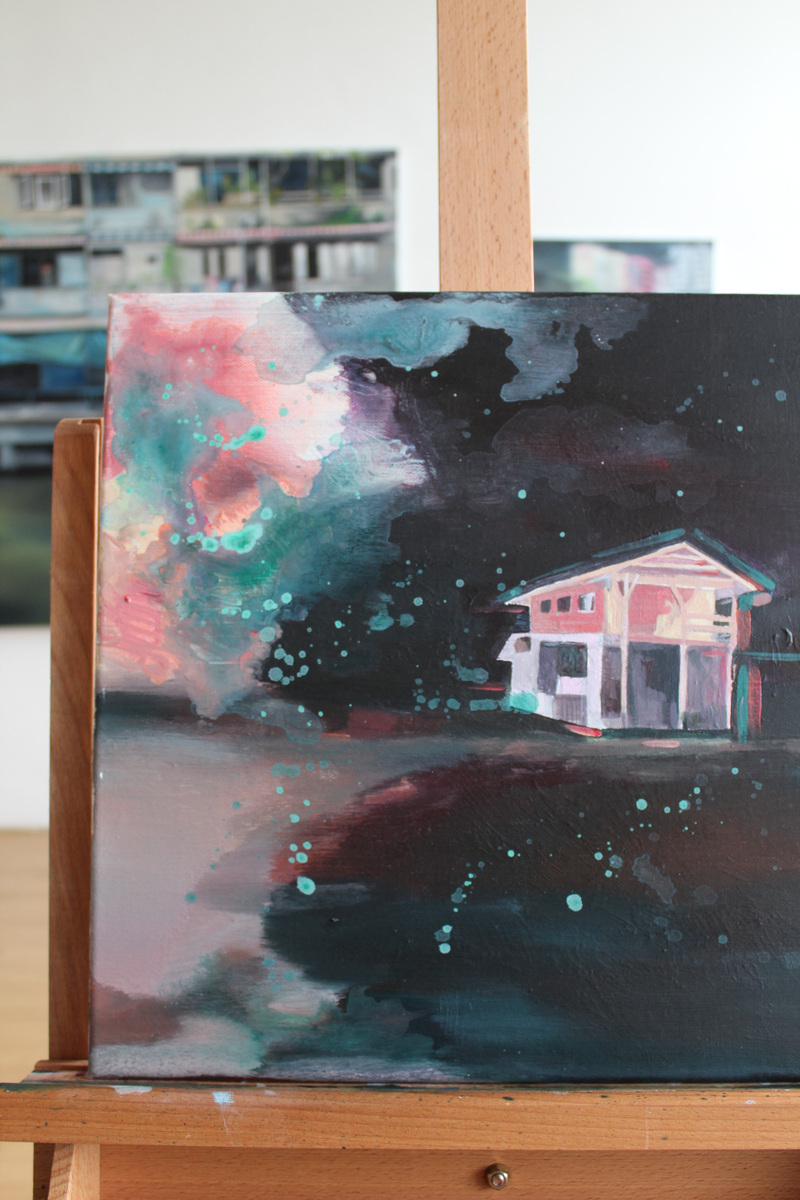
Julie’s work oscillates between eruption and meditation. Many of her landscapes convey something that is beyond the pictures themselves, something even beyond us: the being and happening of elements whose nature transcends our experience. In the Volcano series (acrylic, 2019) all the elements meet: water, air, earth, and fire. The volcano, however, looms in the distance; an eruption is only suggested, and we see that the lava will gush out, cutting a path through snowy plains (Volcano IV). Water vapor amasses in enormous cloud towers; in the cold air, this vapor condenses into water droplets that then arrange themselves in ethereal constellations (Volcano I, Earthquake, House, 2018).
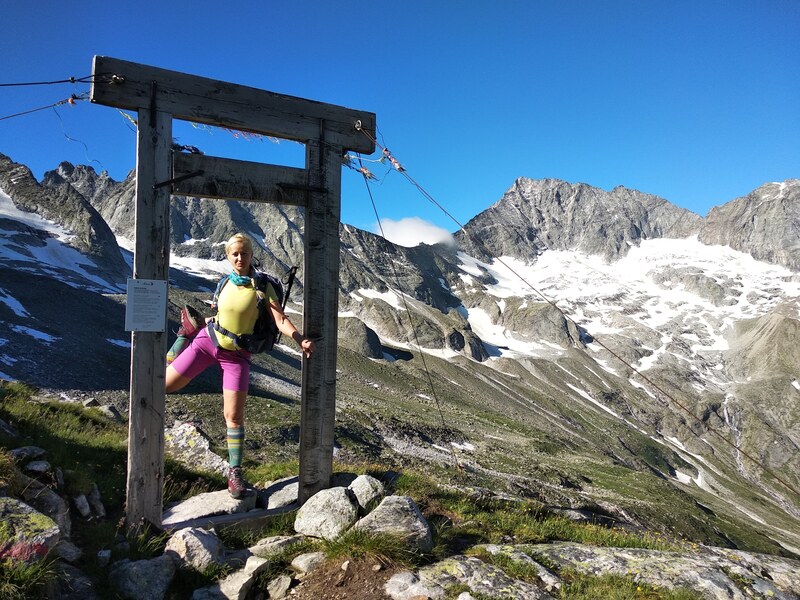
In the watercolor landscape Thin Air (2019) we barely recognize where the ice ends and the snow begins, where the snow ends and the titular thin air begins. We also barely make out a small group of mountain climbers. But these figures are not staffage but added to give a sense of scale, to illustrate how small humans are against this vast space. Observing this spatial continuum suggesting immaculately white infinity, I am reminded of Adalbert Stifter’s Biedermeier novella Rock Crystal (1853), a moving tale about how two small children get lost and are then found high in the mountains. But this Christmas story with a happy ending stands out not only thanks to its accurate descriptions of bizarre snow and ice formations but also thanks to its depiction of existentially deep changes in how space is perceived and experienced. The able-bodied children climb over a moraine in the hope of climbing back down it on the other side—but there is no “other side.” The snowstorm is so heavy that they not only become disoriented but their ability to tell up from down, left from right, is also diminished. The only thing that remains is movement, which no longer takes place along a “here-to-there” axis. All it has is meaning—it is movement preserving the chance of survival. It seems that the well-equipped mountain climbers are mainly interested in the way “there,” in performance: to climb up something, whether taking an existing route or perhaps striking out their own, to stand at the summit. Julie’s painting, already through its title alone but mainly through the measuring of people against a glacier, evokes the limits of human possibilities––as well as return.
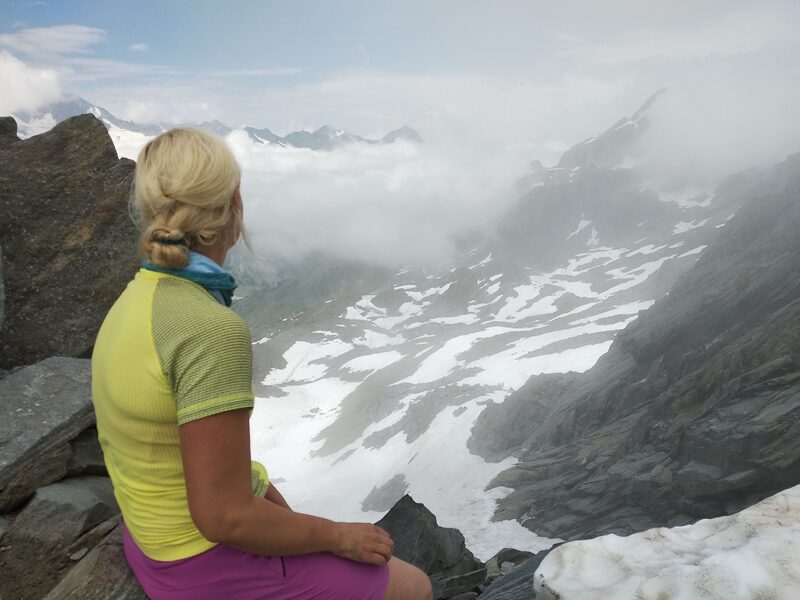
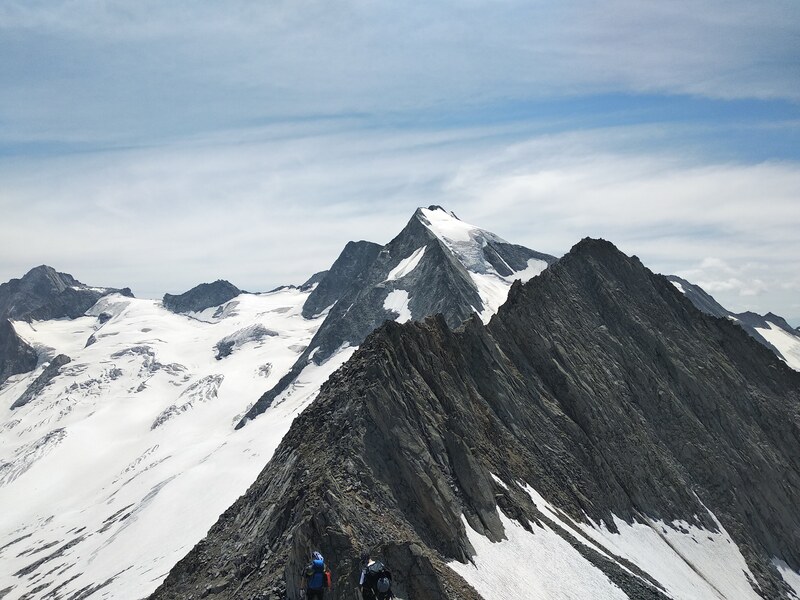
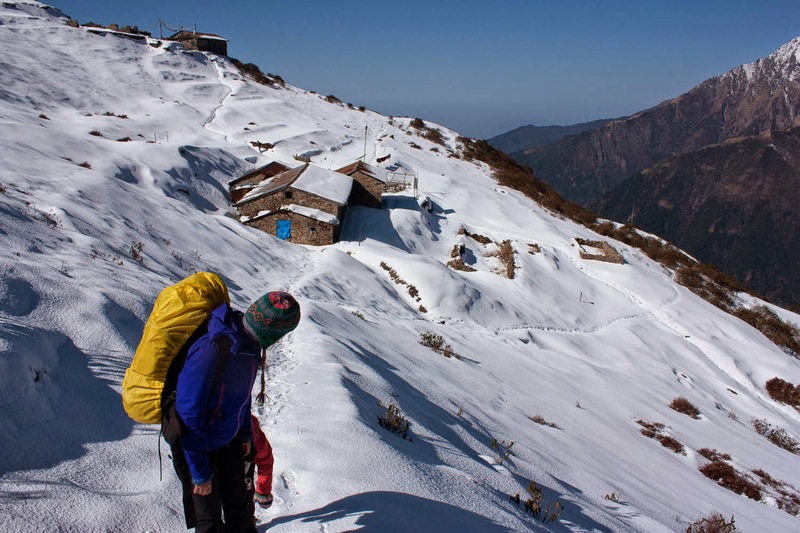 If you are looking for someone to rely on, seek out the company of Julie’s Sherpa (2020). The artist has left him by himself at the mercy of the cold and of spaces in which depth blends with height and they sky with the earth. The sherpa slowly walks along a narrow bridge, holding a rope that seems to have no end... His safety depends on him and him alone, on his endurance, on the mass of his body, on the careful steps of his feet.
If you are looking for someone to rely on, seek out the company of Julie’s Sherpa (2020). The artist has left him by himself at the mercy of the cold and of spaces in which depth blends with height and they sky with the earth. The sherpa slowly walks along a narrow bridge, holding a rope that seems to have no end... His safety depends on him and him alone, on his endurance, on the mass of his body, on the careful steps of his feet.
The intimacy between a person and the mountains is suggested in Sunset (2019, watercolor), featuring a figure sleeping in an open landscape, curled up as if under a blanket, wearing felt boots, with a covered face. But it is not because they wish to be unrecognized: they simply don’t want to get their nose cold or have light shine in their eyes. It’s an animal-like gesture, similar to a wolf tucking its snout into its fur or a duck hiding its head under its wing: “I’m sleeping now!” In Nepalese Boy (2018) the transparentness of watercolor corresponds with the transparency of dreams, or rather the experience of meditation, when the mind is cleared of thoughts. Such subtlety also lightens a terraced Nepalese landscape, brought to life by the patiently bent-over figure of a female tea picker (Nepalese Field, 2018, watercolor).
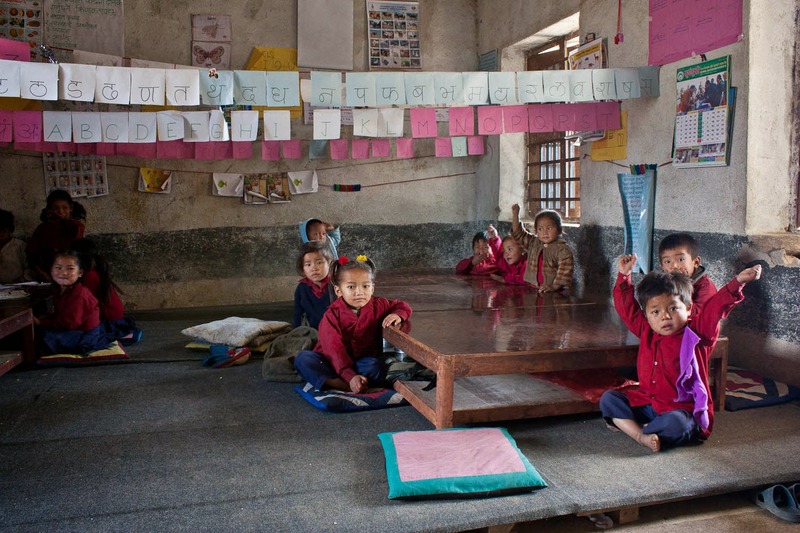
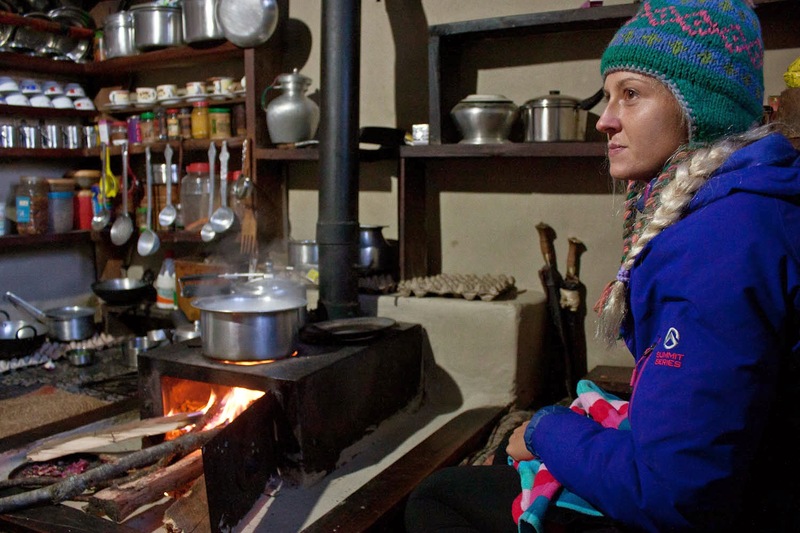
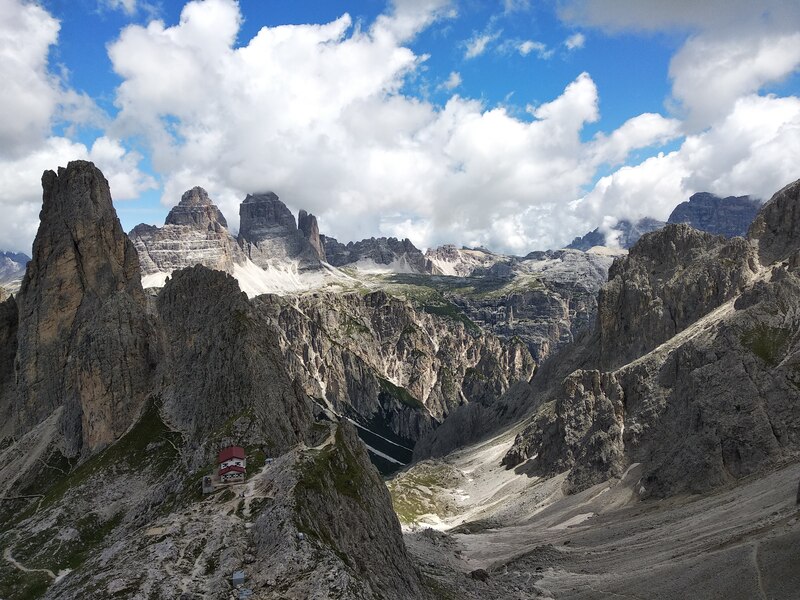
Julie’s exotic landscapes are distinguished by two features: slowed-down time (reflected in the heavy steps of mountain climbers or in the economy of the movements made by rural dwellers) and manifest expansiveness. To depict her other favorite subject, the seashore, the artist uses nearly the opposite watercolor techniques: close-ups and cropping, the result of which at first glance with their random composition are a bit reminiscent of amateur snapshots from vacation. Beach Boy (2020), who clearly hasn’t managed to get a tan yet, is grinning somewhat sheepishly, perhaps into the lens of a family camera, or perhaps at us just because we are looking at him so intently. A tanning beauty is depicted from the perspective of someone who has crawled up behind her through the sand to surprise her, half awake, half sleeping, or from the perspective of a voyeur hidden in the shade of an umbrella. She herself is perceiving only gentle moments of summer warmth (Summer Vibes, 2020) and her resting body. In contrast Boy on the Beach (2021, watercolor) looks around, over the surface of the element with which he has already been physically confronted, a swimmer who has woken up early to be alone with the hot morning sun and the even colder sea... In contrast, a little girl, who on a dreary day, protected from the wind by unwelcoming hotels, is collecting shells on the beach––at least a few for her grandmother or a friend—seems lonely. No one has joined her; no young people are playing beach volleyball nearby. The painting (Dark Sky, oil) is dated 2021: it is as if it has absorbed some of the loneliness that at that time was for many of us the most faithful of companions.
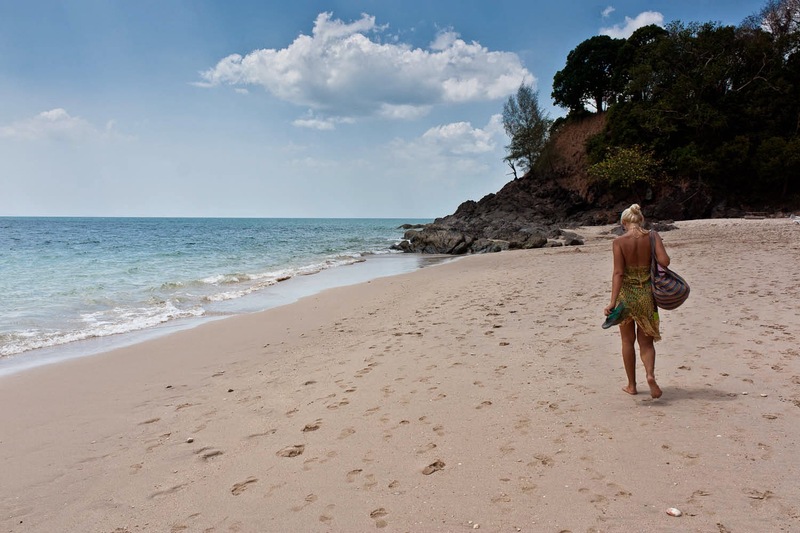
Julie sometimes settles for working with A4 format or slightly larger dimensions. But regardless of the dimensions of the work, regardless of whether a figure is depicted individually in close up or as a small figure in the distance, the artist manages to achieve what is important: the confrontation between people and elements, between figures and environments, pulls the observer into the depicted world.
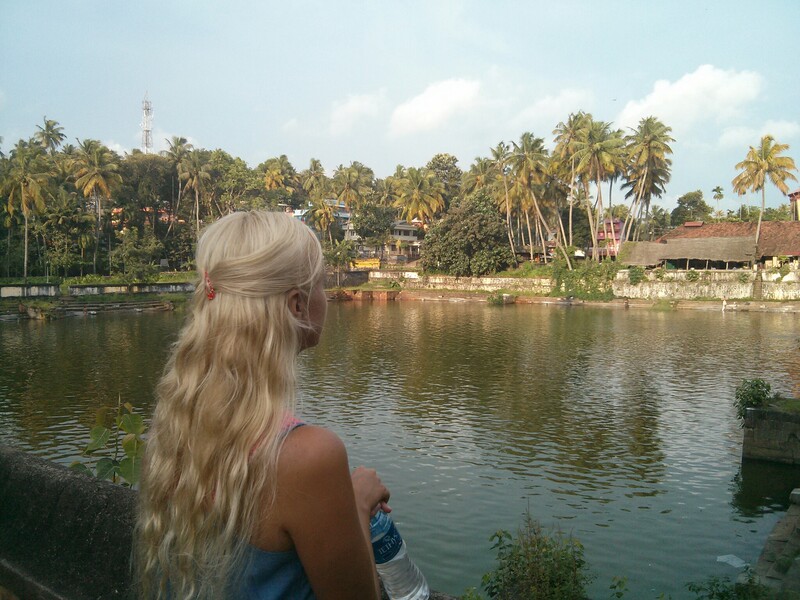
text: Alice Jedličková
Photo: courtesy of the author
